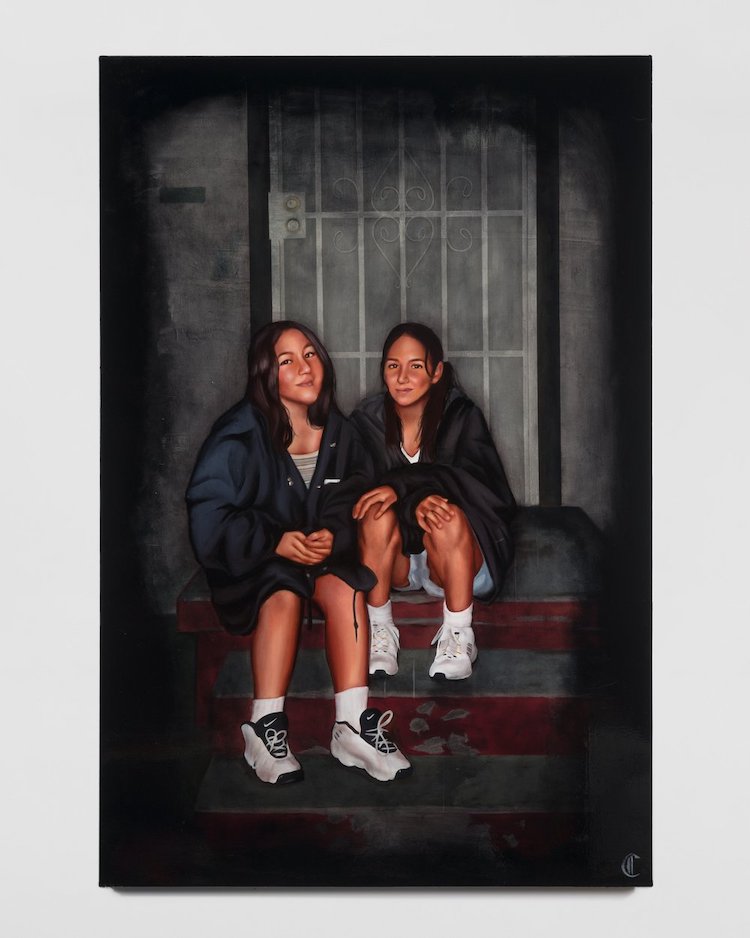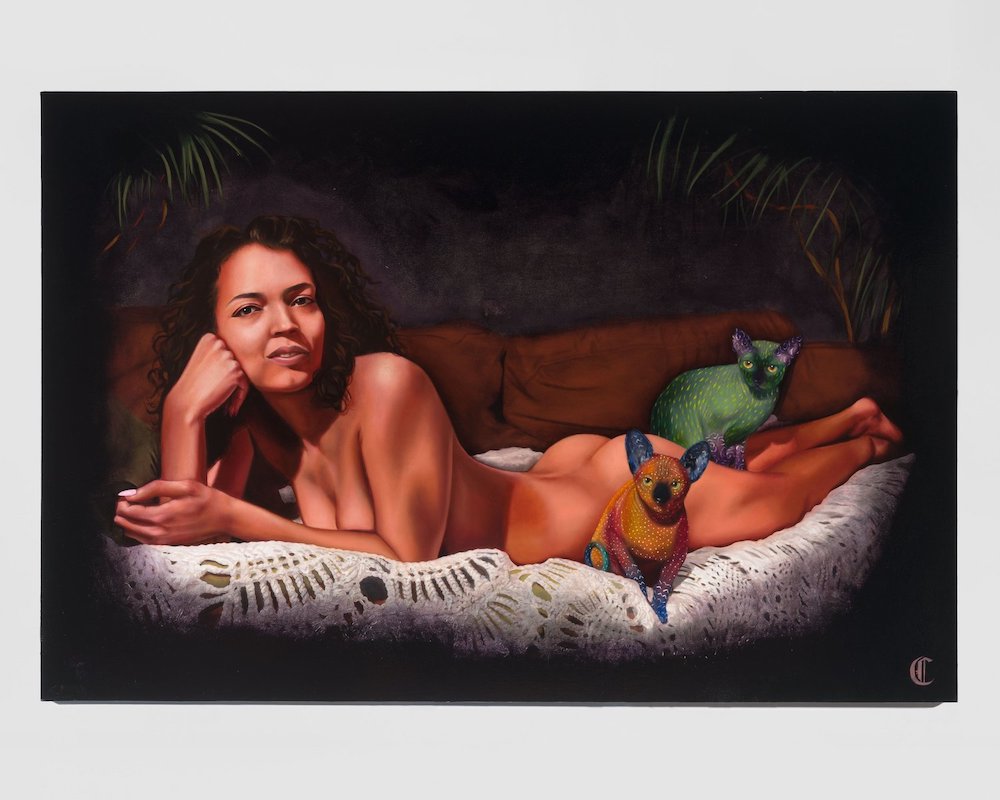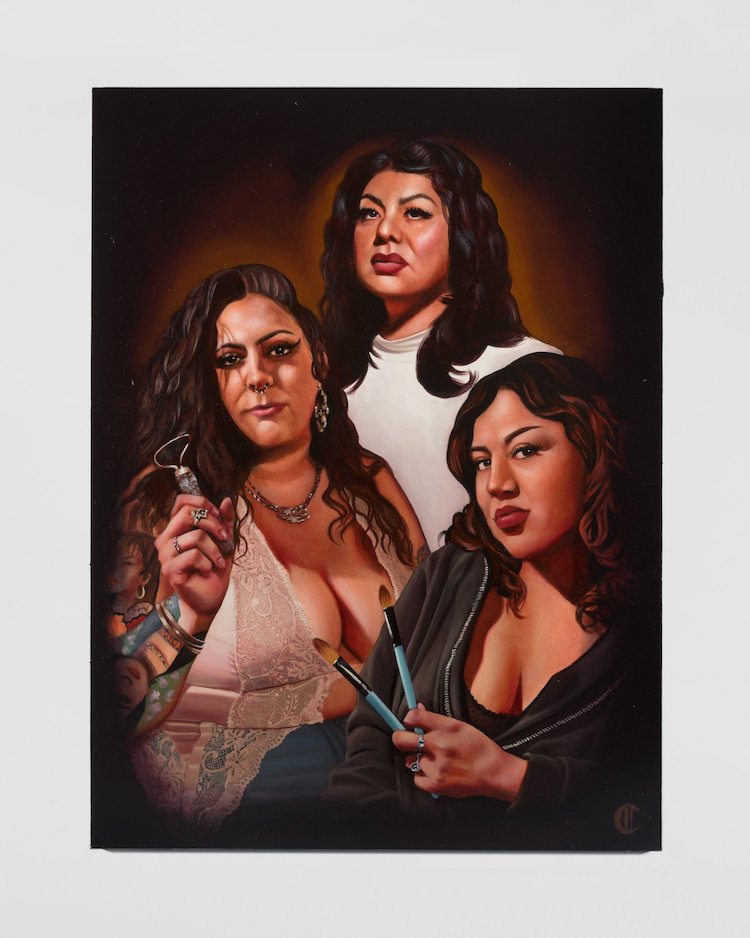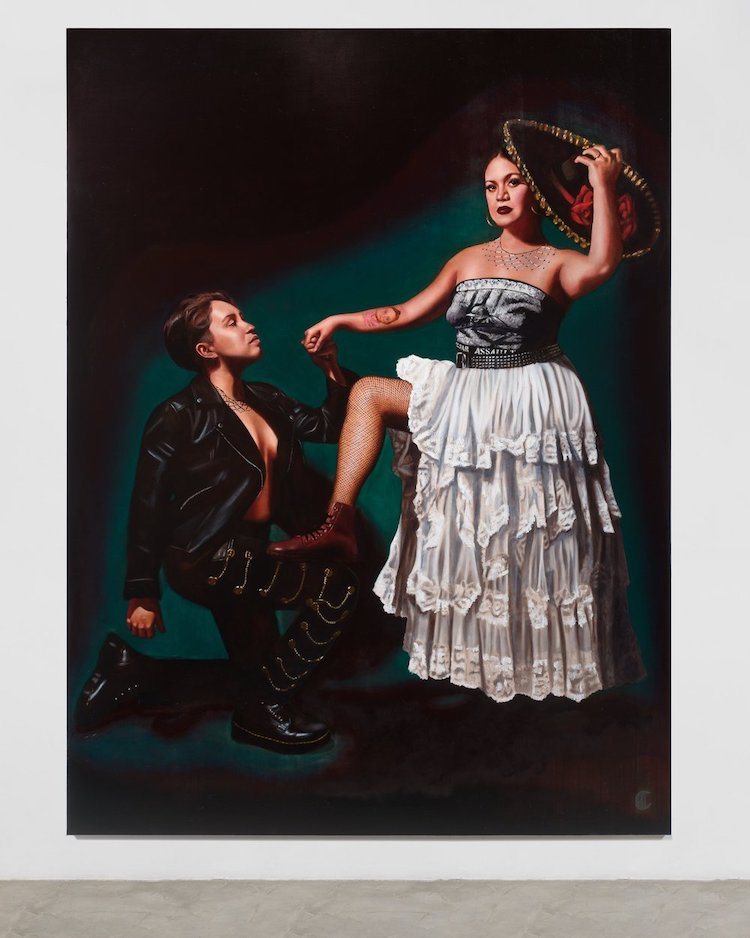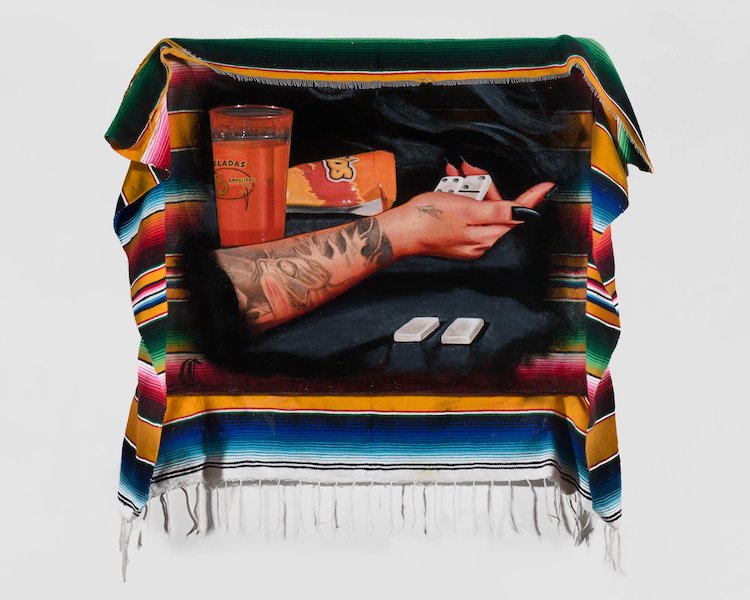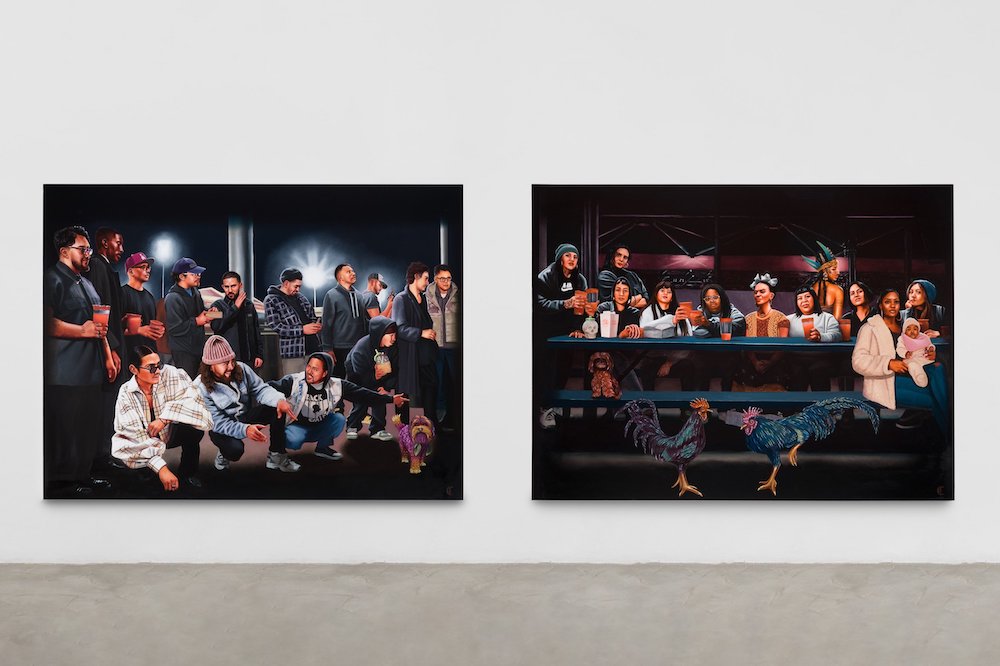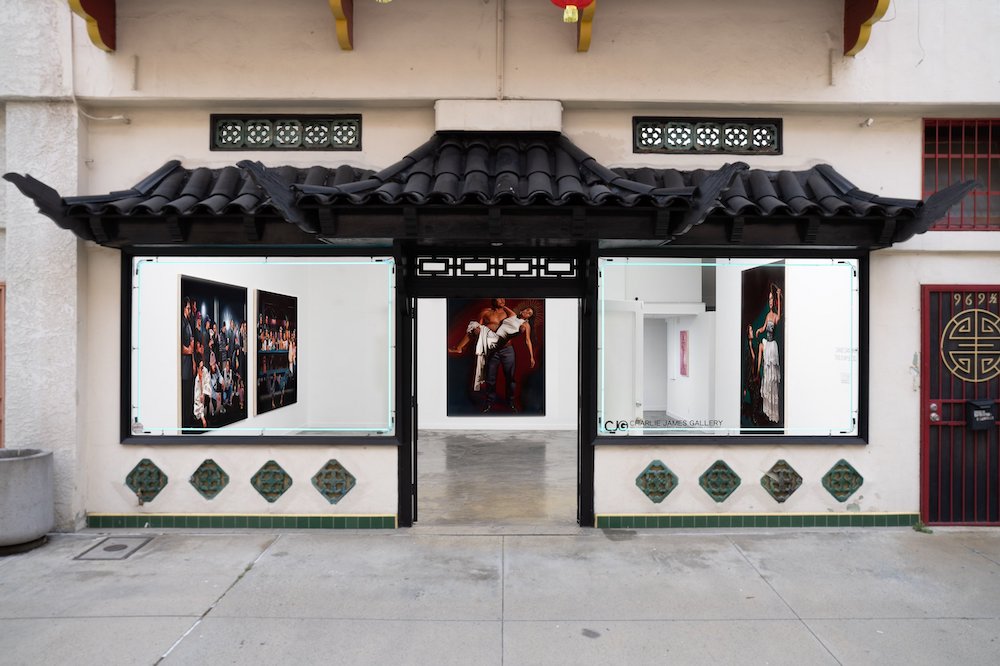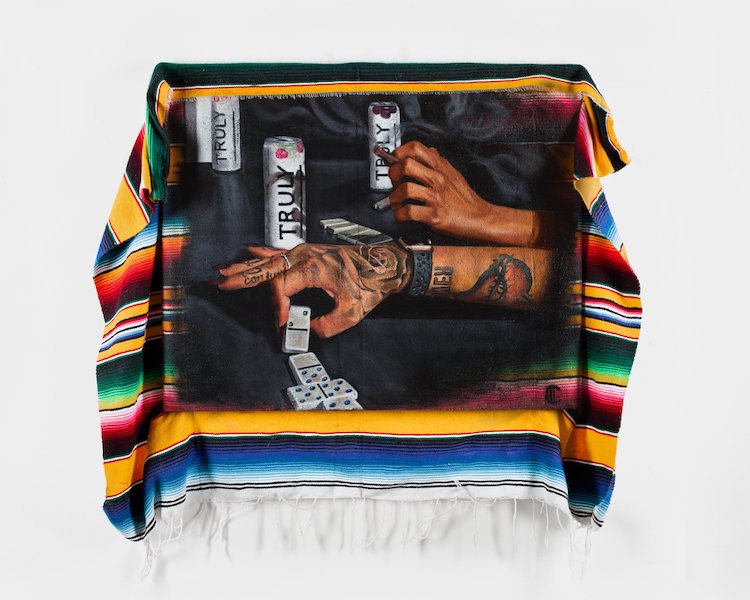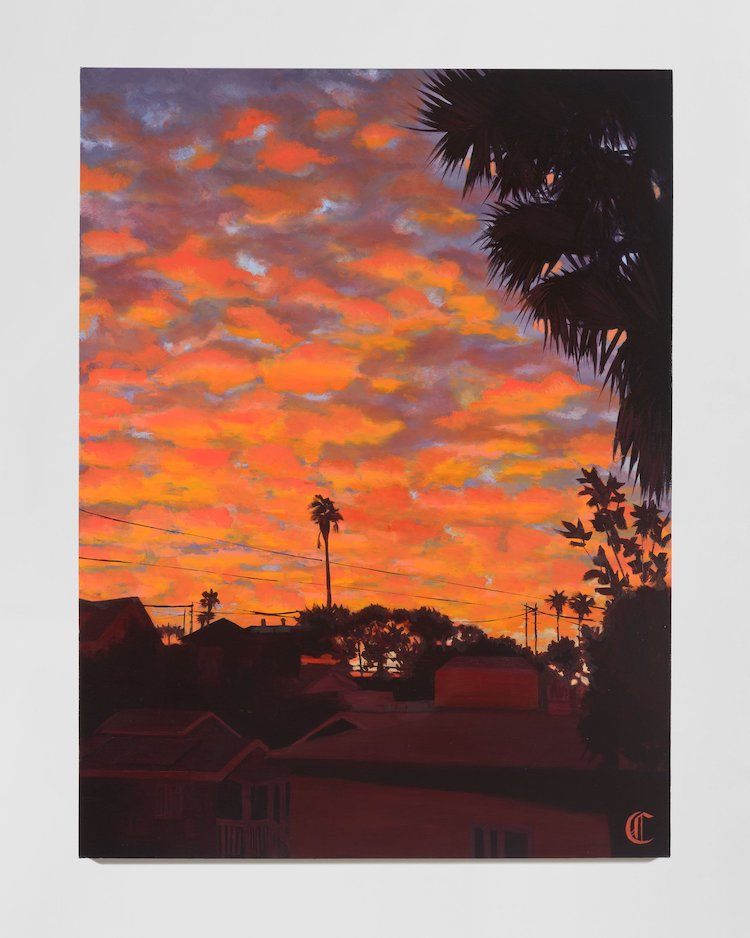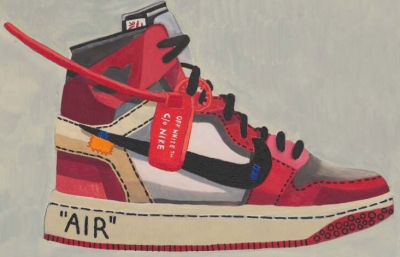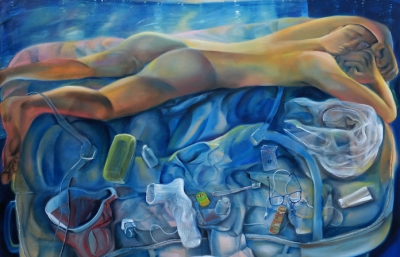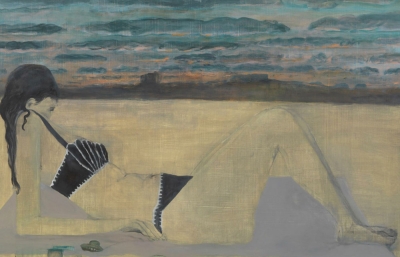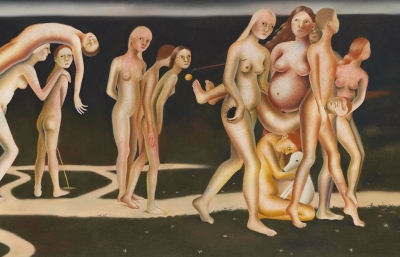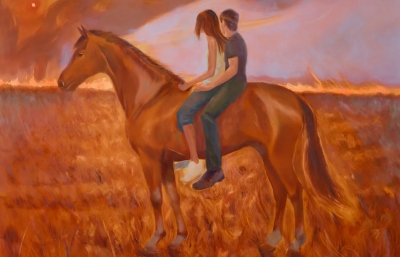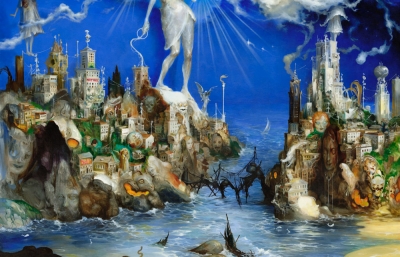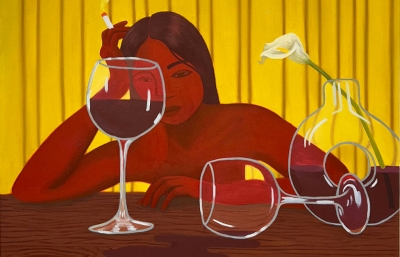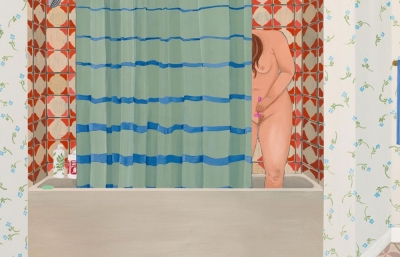Charlie James Gallery is delighted to present our second solo exhibition of paintings and drawings by Los Angeles-based artist Danie Cansino titled This is My Blood.
Danie Cansino’s work is a mix of Baroque realism and Chicanx aesthetics; where one might expect to find historical or biblical heroes, Cansino inserts her own friends and family. Through a commingling of time periods and the conflation of the spiritual with the real, Cansino builds upon a legacy of Mexican painters and the realismo magico that is a part of Mexican spirituality. In her latest solo show This Is My Blood, Cansino takes us into the world of magical realism, wherein she installs her friends and colleagues in a Mechica pantheon, subverting the traditions of Western art.
In This Is My Blood, Cansino brings to question the subjects of Baroque painting through the deification of her own friends, personal heroes, and community. This Is My Blood references the Catholic tradition of the Holy Communion, as well the blood quantum pseudoscience that was foundational to the Spanish caste system which still operates in Latin America today. This Is My Blood confronts Cansino’s relationship of being both the colonized and the colonizer, mixing traditional Catholic imagery with elements of Indigenous cultural and spiritual traditions. Through the fourteen works in the show, Cansino creates her own personal pantheon of gods and goddesses, including fellow artists such as rafa esparza, Patrick Martinez, and Nao Bustamante, as well as others who have been influential in Cansino’s practice like Mike Kelley, Paul McCarthy, and most notably Frida Kahlo.
The centerpiece of the exhibition is a 6 x 16-foot diptych painting which depicts Cansino’s take on The Last Supper, (1495–1498). The left panel, titled Your Truth Will Determine… features thirteen male artists and colleagues of Cansino, while the right panel titled A Seat at The Table features eleven female artists and curators, including a self-portrait of Cansino herself. By having two fewer women present than anticipated for a rendition of The Last Supper, Cansino seeks to reveal the gender imbalances that exist throughout the art world, in which men make up the majority of artists featured in museums and sold at auction. The right panel stays truer to da Vinci’s original, featuring Frida Kahlo as Jesus and La Malinche (born Malintzin) as Judas. While both women are important members of Mexican history, the two had very different life experiences, one perceived as a great artist and the other a traitor. As both Kahlo and Malintzin suffered much through their lives, Cansino also points to the burden of labor, guilt, and shame that women of color must carry in their lives.
As a tattoo artist, much of Cansino’s work references the street culture of Chicanx communities on the eastside of Los Angeles. In the painting titled This is My Blood, Cansino paints a photo taken of herself with her closest childhood friend Andrea on the porch of her Montebello home, both proudly wearing their first name brand sneakers purchased earlier in the day. In the ballpoint drawing Whittier Boulevard, Cansino pays homage to her tattooing background. Using a blue ballpoint pen instead of a needle, Cansino uses tattooing techniques to draw the iconic sign over Whittier Boulevard in East Los Angeles. In Palm Views, Cansino paints a landscape scene from the vantage of her current residence in East LA with sunset and palm trees in the background.
Several paintings in the show reference traditional catholic and Western subject matter. In Flesh (l) and Blood (r) Cansino paints the hands of herself and a friend playing dominoes atop two separate serapes, their two hands nearly touching in a pose suggestive of Michelangelo’s The Creation of Adam (1508-1502). In a painting titled Jessica (As Olympia), Cansino imagines fellow Los Angeles-based painter Jessica Bellamy as Manet’s Olympia alongside her two sphynx cats depicted as mythical Mexican creatures known as alebrijes. In Tres Gracias (Three Graces) Cansino reimagines Peter Paul Rubens’s The Three Graces populated with her friends Ever, Lolbette, and Kali-Victoria who are painted holding the tools of their respective arts, except for Ever who wears white, vital to her practice as a crowned daughter of Obatalá & Oshun and curandera lineage.
Through her reimagining of both Western and Indigenous traditions, Cansino subverts a number of tropes present throughout the history of art and the Latinx culture of machismo. In one painting entitled Popcatépetl and Iztaccihuatl (star-crossed lovers), Cansino reimagines the Mexican myth of Popcatépetl and Iztaccihuatl as fellow artists rafa esparza and Maria Maea. The story of Popcatépetl and Iztaccihuatl was created to serve as an explanation of why two volcanoes in Mexico resemble two lovers. The two lovers were of different classes and therefore their love was forbidden. Generally suggestive of Romeo and Juliet, Iztaccihuatl was told that Popcatépetl died in battle, which caused Iztaccihuatl to die of grief. Popcatépetl then took her body to the volcano which shares their namesake and they have been in that same position ever since.
A recurring element in Cansino’s work is the traversing of different periods of time. In both Jarabe Tapatío and Put on Your Red Shoes Cansino references the traditional dance of folklórico as well as danza azteca, two popular Mexican styles of dance. In Put on Your Red Shoes fellow artist and danza azteca performer José Guadalupe Sanchez III is seen wearing both his contemporary clothing as well as the traditional clothes worn for danza azteca, with the 6th Street Bridge visible in the background. In Jarabe Tapatío, Cansino queers the tradition of folklórico dancing, showcasing two women in a romantic pose. The tradition of folklórico dancing is a very gendered one, in which men and women have distinctly different dance steps, as well as dances that are strictly women or men only. However, these days it is becoming more common for there to be queer folklórico and mariachi groups.
-Text by Leah Perez



